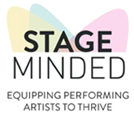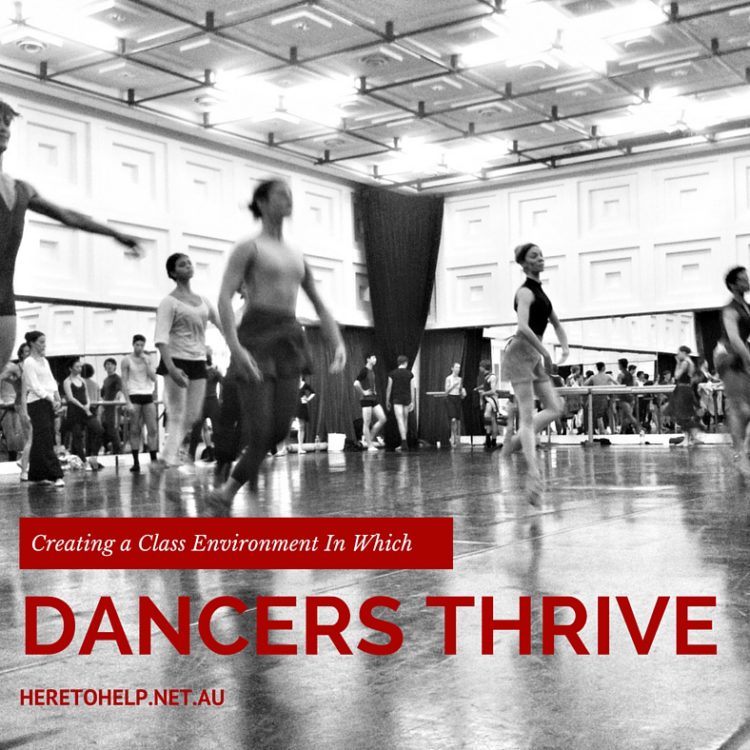Creating a Class Environment In Which Dancers Thrive
Last week I was fortunate enough to speak at Ausdance Victoria’s International Dance Educator’s Workshop. I had a few requests from readers to hear about what I spoke on there, so thought I’d dedicate this month’s blog to the teachers (and perhaps future teachers???) amongst us about how you can create a class environment in which dancers thrive. Enjoy! (And if you like it, please share, comment, and most importantly put into practice!) :-)
[divider width=”medium”]
We all receive a legacy of how to teach (or how not to teach!) from our own teachers. We also carve out our own path and adopt new & evolving ways of teaching.
My own experience as a dancer was mostly that of a traditional authoritarian teacher. There was yelling, demanding, discipline, high expectations, judgement, little room for questions/discussion/mistakes, only compliance…
Then when I transitioned from dancing and began teaching, I also commenced my counseling training. What jarring differences I noticed in the approach adopted between these fields!
I began trying to apply what I was learning in my counseling studies about the optimum conditions for change, growth and development in a ballet school context. It was harder than I expected!
Even now, the most challenging space for me to practice what I preach about dancers’ wellbeing is when I’m a teacher entrusted with a class of students.
Yet, I share this with you as a fellow on the journey toward a safer, more balanced approach to teaching that will enable students to become independent, responsible, confident, creative and capable dancers, well-equipped to face the challenges of the industry.
Creating an Environment In Which Dancers Can Thrive
1. Safety
Your studio needs to be a Safe Space – the physical environment, but also the emotional environment. Is your studio a safe space for your students to express themselves, find their joy, their passion, their sense of competence, a place where they can be themselves without fear of being judged, rejected, belittled or blamed?
How can you make your class a safe space when students enter? Is there a ritual you can always do at the start that will help them feel comfortable, welcome & safe?
2. Relationships
Who you are is more important than what you know.
Our brains are social brains. We learn by imitation, by relationship. Think back to your school days, did you ever love a subject only to get a new teacher the following year and suddenly find it so boring, difficult or confusing? That’s because of your relationship with that teacher, their passion, their enthusiasm, their connection with the material and also with you is what made the difference.
How can you infuse your teaching with genuine interest in your students and in what you are teaching? Notice their personality, their interests, their individual progress and incorporate that into how you teach.
3. Control
The absence of control is also known as trauma. And I’m afraid our dance students seriously need some control back.
Traditionally dance has been taught from quite a military model (especially in ballet) where students have very little control. All they can do is comply. Yet to produce thriving, creative, resilient performers, we need to give students opportunities to learn how to develop their own autonomy and this process takes T-I-M-E.
Sometimes, less is more. Teaching less content, but giving students more time to digest, experiment and master what they learn is so very important.
A lot of teachers work way too hard & fast for their students, diving in to explain something, correct or expect something, instead of empowering the students to work it out for themselves: how to behave, how to focus, how to reach their goals, how to apply corrections, learn combinations, cope with stress etc.
How can you give control back to your students and equip them with the skills they need to thrive for the long run?
4. Wellness
Use dance to promote wellness (i.e. make it fun & engaging!) – Remember dance is supposed to be about expression, its supposed to be an outlet. Use it for that purpose and see yourself and your students thrive.
Have fun, laugh, keep things interesting! Create positive memories with your students. You’ll be more inspired to teach when you let yourself have fun too. Let your students see your enthusiasm and passion for dance/learning
How can you have more fun in your classes and impart to your students a real understanding of the joy that dancing can be?
I’m still working on the answers to these questions myself, but I’m committed to continue carving out a new footprint for the next generation… will you join me?
🙂 Philippa

